Continuing our little tour on our first day in Chiclayo, our taxista insisted we had to see the two main beaches, for which, though we didn’t know it, apparently the city is quite well known.
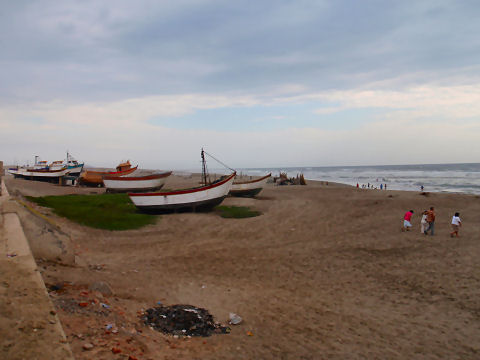
First up,
Playa Santa Rosa, which is known as the fishermen’s beach. And, it really is pretty dedicated to them – fishing boats, fishermen, fish… not much else going on, but quite pretty.
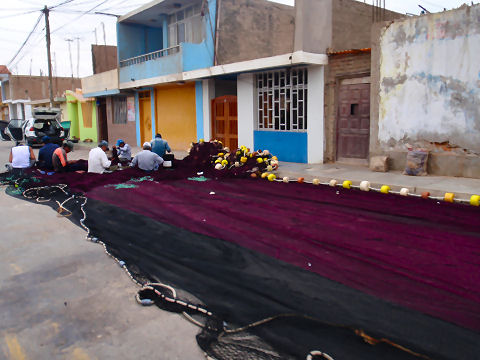
And, off to the side, you can see groups of men repairing the nets for the fishing fleet.
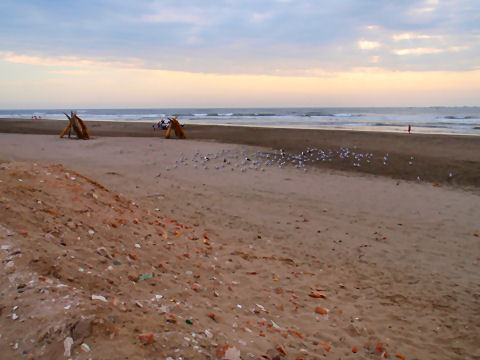 Playa Pimentel
Playa Pimentel, on the other hand, is a long stretch of beach, that seems dedicated to pleasure. There are areas for sunbathing, for playing, for eating.
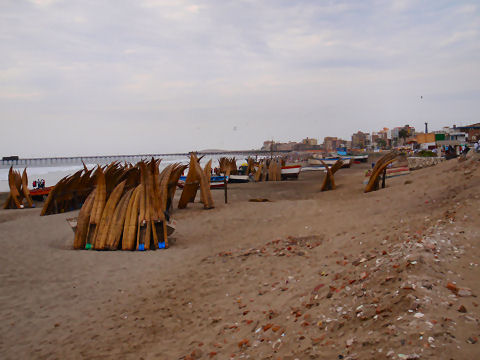
Plenty of
caballitos de tortora to take out for a paddle, or be taken out.
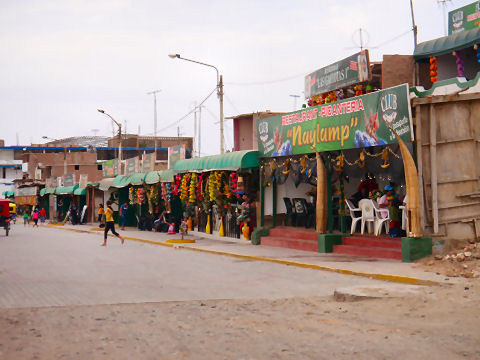
And, when it comes time to dine, there are little restaurants stretching along several blocks. One interesting thing, most of them have public showers either in back or on the roof – it’s an extra enticement in from the beach to be able to rinse off (they have soap, shampoo, some of them apparently even towels), and then sit down to a nice mid-afternoon lunch.
I’m going to go slightly out of chronological order, skipping ahead two days to our last (and third) day in Chiclayo, since we had the afternoon free we headed back to Pimentel, arranged for the cab driver to pick us up later, all for a nice, set, round-trip fee. And, before the sunbathing and splashing in the water, we settled in for a bit of lunch at one of the first spots off the parking area, Los Percebes.
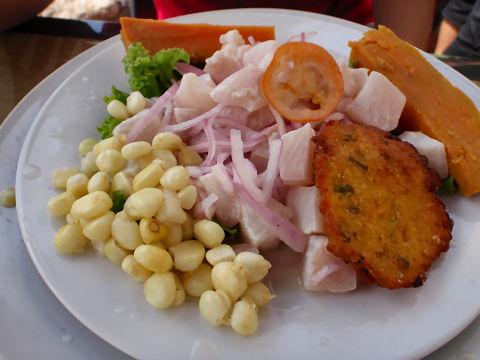
Henry started with a
ceviche de lenguado – nice and fresh flounder, lacking a touch of salt and chilies, but both were quickly provided.
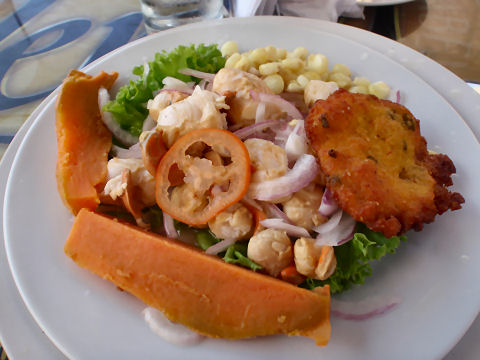
I went with a more unusual ceviche,
de conchas de abanicos – a type of bay scallop, complete with its coral, served up ceviche style. Oh, the little pancake looking things on the two ceviches,
tortillas de choclo, a very popular breakfast snack – fried corn cakes made with fresh corn, flour, eggs and seasonings – also used as a garnish on various dishes in the Chiclayo area. Note also that the
batatas, the white to yellow sweet potatoes that we get in Buenos Aires, and, for the most part, in southern Peru, are here replaced with
camote, or yams, the bright orange sweet potato we know in the States.
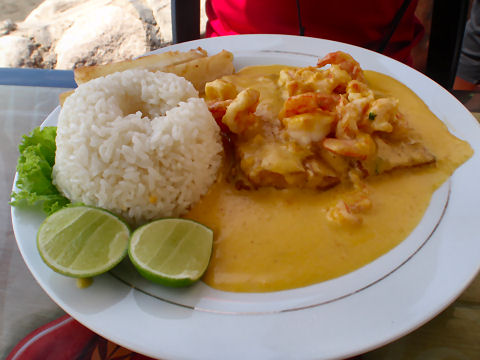
Henry went with a
mero a lo macho for his main course – pan-fried grouper topped with a creamy shellfish sauce, particularly sweet shrimp.
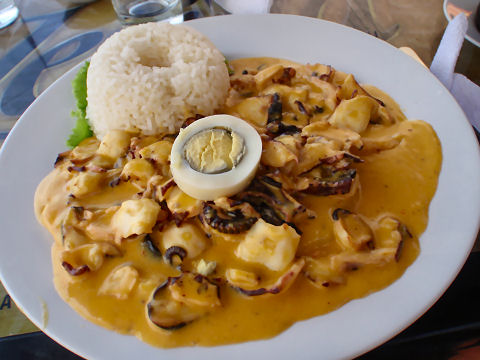
Something different – fresh octopus, first boiled in salted water until tender, then served up over potatoes and rice in a mildly spicy yellow pepper sauce. Delicious!













